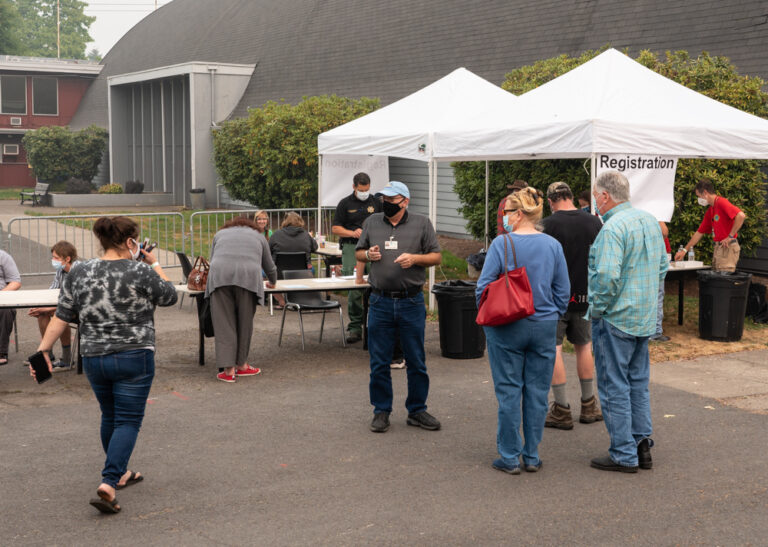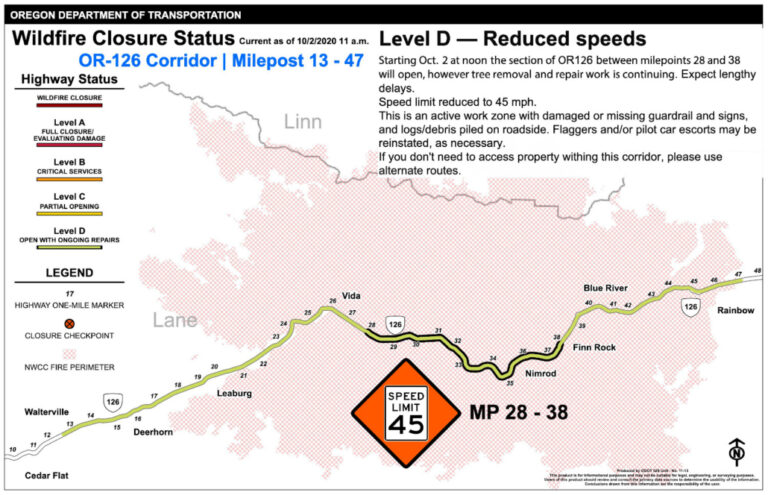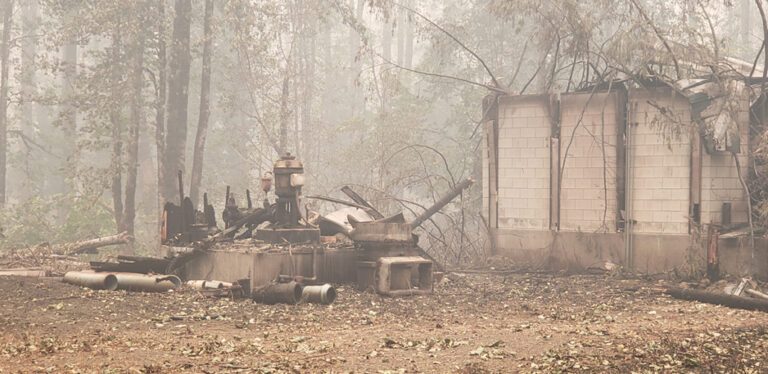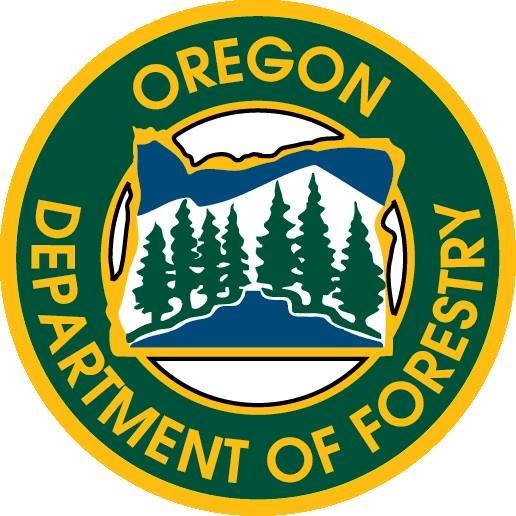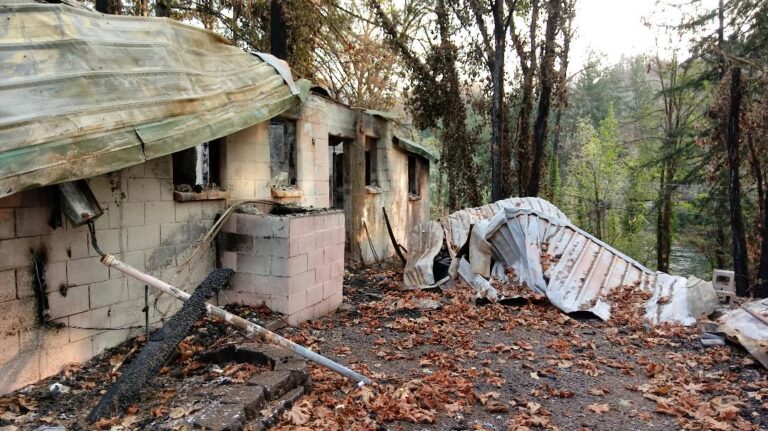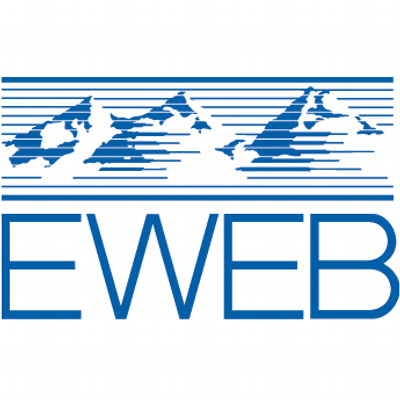Don’t Start Clean Up Now – FEMA, Lane County + Oregon DEQ will Help and Save You Money!
Daniel Hurley, Director, Lane County Public Works met the McKenzie CDC and spoke with evacuees from the Holiday Farm Fire last Saturday at the MERC in Lane Events Center and stressed that residents of the McKenzie valley who lost property in the fire should not get started cleaning up, moving or dumping the debris for several important reasons.
The waste and ash left after the fire may be highly toxic and a danger to anyone who tries to clean it up. Another serious issue you might encounter when cleaning up the debris before your insurance company has formally assessed the damage on the ground and allowed you to start is that your clean up work may seriously affect any claims you are making related to the fires.
Official Advice on Debris Management
It is recommended that you do not disturb ash or debris on your property until after it has been assessed by hazardous materials response professionals. There may be hazards such as asbestos fibers, toxic chemicals, and electrical or structural hazards on your property.
Lane County and its state and federal partners encourage residents who are cleaning up burnt structures to WAIT!
FEMA and the State of Oregon have reached agreement on a plan that will allow residents to opt in to have EPA crews remove household hazardous waste from affected structures at no cost to the property owner. It is expected that FEMA will agree in early October to extend the same sort of disaster relief assistance to bulk debris. When that happens, property owners will again be able to opt into an agreement to have burnt debris removed at no cost to the property owner. Lane County’s McKenzie Bridge transfer station can accept normal garbage and recycling, including spoiled food. It cannot accept ash or bulk debris from burnt structures. Oregon DEQ presumes ash from burnt structures to contain asbestos if the structure was built before 2004. Landfills and transfer stations in Oregon are prohibited from accepting bulk deliveries of presumed asbestos-containing material. Oregon DEQ may choose to amend its waste-handling requirements at some point but has not done so to date.
Safety Guidance for Debris Management
State and federal agencies are assisting county and local emergency management agencies with assessing hazards and removing ash, debris and hazardous substances from wildfire impacted areas.
It is recommended that you do not disturb ash or debris on your property until after it has been assessed by hazardous materials response professionals. There may be hazards such as asbestos fibers, toxic chemicals, and electrical or structural hazards on your property.
Ash and debris from burned houses, sheds and other structures can be hazardous, particularly when particles are inhaled. This ash and partially burned debris may contain asbestos, mercury, lead, cadmium, chromium and a variety of other dangerous chemicals.
Before you return to your property
After contacting your insurance company, property owners should develop a plan before returning to the area that was burned.
- Be sure you know exactly what your insurer is willing to reimburse you for. Costs can be higher than you’d think, so make sure you know what your potential financial liability will be.
- Likewise, if you plan to apply for assistance from FEMA, make sure you know that the work you’re doing is eligible before you start. If it isn’t, you may not receive the assistance you expected.
Use caution around debris
-
- Be aware of all electrical hazards – including those from downed power lines, unstable walking surfaces and sharp objects buried in the ash. Use extreme caution at all times when near the debris.
-
- Wear sturdy footwear, eye goggles, and heavy-duty work gloves. If possible, wear disposable coveralls and dispose of them after use. If you do not wear disposable coveralls, make sure to have a clean set of clothes to change into after working or rummaging in debris and ashes.
-
- Cloth face coverings, paper masks, or bandanas are not very effective at filtering out fine airborne ash, dust or asbestos fibers. N95 and KN95 respirators, if properly fit tested and worn, can offer some protection from airborne particles. See more about masks in the next section.
-
- Before cleaning up ash and other debris, get the material tested to determine if it contains asbestos. Many homes and buildings have materials with asbestos. Asbestos use has decreased significantly over the years, but asbestos still exists in some building materials produced today. If it contains asbestos, hire a licensed asbestos abatement contractor. Ash must be adequately wetted to control dust that can become airborne. Water may not always be available, but it is one of the most important means to control ash and asbestos. Don’t use a leaf blower to clean up ash, it will create more airborne particles.
-
- Clean recyclable materials such as metals and concrete with water prior to transport, if possible. This is to reduce the spread of asbestos or other contaminants in the ash.
-
- Wash any recovered personal items with water or wipe with a damp cloth to remove potentially toxic dust.
-
- Children should not be involved in clean-up activities. Do not let children near the debris or in an area where they might breathe airborne particles left from the fire. It’s also important to avoid spreading ash and debris around your property.
-
- Household chemicals may be dangerous to handle, so take care before handling paints, bleaches, oils, or other household hazardous wastes that may be partially burned.
-
- Call your local garbage hauler or transfer station with questions about waste disposal.
Masks and respirators
Cloth face coverings, paper masks, or bandanas are not very effective at filtering out fine airborne ash, dust, or asbestos fibers. This is because they typically do not have a tight fit around the face. However, they are good for minimizing the release of droplets that help spread COVID-19. N95 respirators, if properly fit tested, and worn, can offer some protection from airborne particles. KN95s are similar to N95s. Some are NIOSH approved but do not meet health care standards. KN95s need to fit well enough to form a seal and be properly worn. Centers for Disease Control (CDC) Respirator Fact Sheet
Before you rebuild or begin demolition
State rules govern various aspects of managing and removing asbestos, and these rules are in place to protect public health. Refer to DEQ’s guidance on asbestos or contact DEQ prior to starting any demolition activities.
Helpful Links:
- State Cleanup Information: https://wildfire.oregon.gov/cleanup
- Asbestos: http://ordeq.org/asbestos
- Household hazardous waste: http://ordeq.org/hhw
- Septic systems: http://ordeq.org/septic
- CDC tips on how to stay safe after a wildfire
- Fact sheet on Safely Managing Ash and Debris
Asbestos and Solid Waste Contacts serving Lane County:
- Asbestos (Lane Regional Air Protection Agency): 541-736-1056
- Solid Waste: 541-686-7868
More Information
For more information and to keep in touch with up to date information visit the Lane County Holiday Farm Fire Resources page here and we will be posting updates as they come in.
Everyone wants to get started on the cleanup and start to repair or rebuild but for your safety and financial security, it is important that you take no action now. You do not want to run up huge waste disposal bills, risk your insurance claims or most importantly risk your health.


